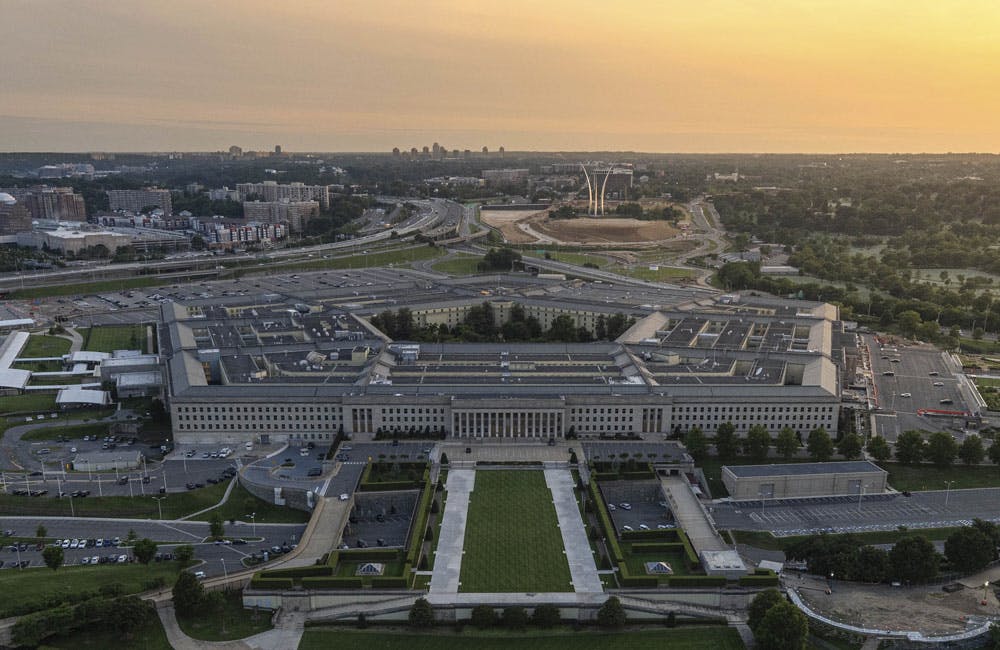DOD Wants to Accelerate GenAI With AI Rapid Capabilities Cell
The Defense Department sunset Task Force Lima and launched a new effort for generative AI development with the AI Rapid Capabilities Cell.

The Defense Department’s new generative AI accelerator is a “natural evolution” from its initial Task Force Lima initiative it sunset in December.
In Task Force Lima’s place comes the AI Rapid Capability Cell managed by the Defense Innovation Unit and Chief Digital and AI Office to further increase the scale at which the Pentagon embraces generative AI.
“AI RCC is the natural evolution of Task Force Lima, where Task Force Lima was that exploration and understanding of the landscape and how it impacts the DOD,” AI RCC’s Deputy Director Jon Elliott told GovCIO Media & Research. “We’re pushing forward on that by helping scale that accelerate function, do targeted investments and do larger scale, GenAI-focused pilots and a sandbox to help get generative AI in the hands of warfighting users.”
Task Force Lima was an 18-month program to advance a unified approach to responsible generative AI adoption within DOD. The agency is taking lessons learned from the effort for this new iteration.
“Our partnership with CDAO and collaboration on the Rapid Capabilities Cell will allow us to shape critical AI initiatives in a way that incorporates the standards, policy and requirements from the beginning. The result will help us scale the tech faster and more reliably and will also help change the way the Department thinks about software development and delivery tempo for the future,” said DIU Director Doug Beck in a statement.
DOD will support the AI RCC with approximately $100 million in fiscal years 2024 and 2025 to build pilots for priority use cases and develop foundational AI infrastructure and tools.
The task force’s commander, Navy Capt. Manuel Xavier Lugo, told GovCIO Media & Research though the task force has come to an end, the knowledge gained and partnerships created will scale and continue to develop through the AI RCC.
“Knowledge management is going to be seamlessly transitioned. It’s not like we went ahead and burned all the documents, destroyed everything, we’re done, we’re closing shop,” Lugo said.
Many of Task Force Lima’s leaders and personnel will continue their work with AI RCC, but in a more formalized setting with a larger scope than Task Force Lima, Lugo said.
Task Force Lima finished its run ahead of its 18-month timeline. Through that accelerated process, Lugo said the biggest lesson learned was the importance of keeping a human in the loop.
“This is not ‘fire and forget’ technology. This is not stuff that we can just go ahead and let it act on its own without having human both in and on the loop in whatever workflow we’re doing,” Lugo said.
Lugo also highlighted challenges the task force tried to tackle, including hallucinations, false negatives and infrastructure gaps.
The task force took on hundreds of use cases and built a community of practice with more than 800 members throughout DOD, academia and industry, according to Lugo. While the task force set guardrails, it otherwise encouraged community members to test freely to build familiarity with generative AI.
“We would give them artifacts to help them make decisions. We would not make decisions for anyone. We would just provide the information, and units still have their autonomy to make decisions, and the services as well,” Lugo said. “[With] that [and] our interim guidance, we made it purposely like, ‘this is your hard left, your hard right limits,’ and people could constrain more as they felt, for their confidence factor.”
“We need an all-hands-on-deck approach to accelerate development and deployment of these tools for the Department of Defense to responsibly harness the tremendous promise of AI in everything from financial management to logistics to operations planning to autonomous systems,” said Radha Plumb in a statement as chief digital and AI officer before she departed at the start of the new administration.
The AI RCC will test pilots in warfighting and enterprise management use cases first, focusing on command and control (C2), decision support, software development and cybersecurity.
“The DOD is moving forward with this in many different areas, and we want to encourage that, and also look toward targeted investments to scale that in certain areas to help us better understand what the impacts are of getting hundreds to thousands of users using this all the time,” Elliott said.
This is a carousel with manually rotating slides. Use Next and Previous buttons to navigate or jump to a slide with the slide dots
-

Feds Modernize Services to Improve User Experience
Tech leaders at CMS, USPTO and IRS are leveraging tech and bolstering security to drive new efficiencies and enhance user experience.
5m read -

The CAIOs Leading Responsible AI Development Across Government
New AI memos from the Trump administration prompt federal agencies to establish chief AI officers and OMB to launch a new CAIO AI Council.
7m read -

Space Force’s Former CITO Talks AI Dominance Amid Rising Global Competition
Lisa Costa explains how the Trump administration’s recent AI legislation has signaled a strategic shift toward more agile and collaborative federal AI development.
9m listen -

Agencies Look to AI, Policy to Advance Modernization Goals
Agencies are leveraging AI and changing their acquisition approach to modernize operations and enhance mission delivery.
3m read








